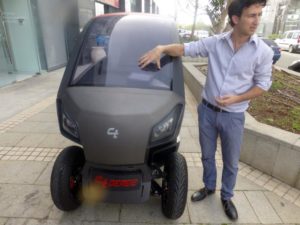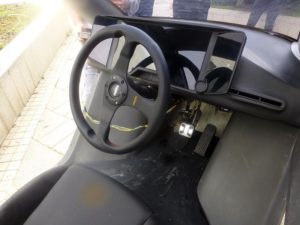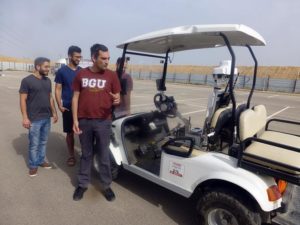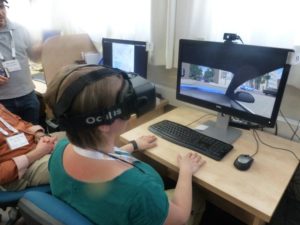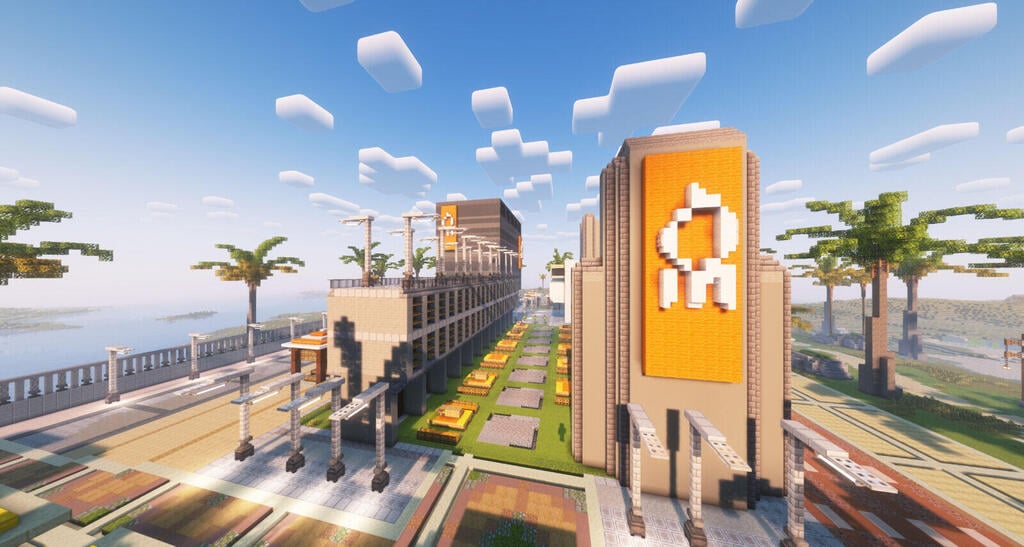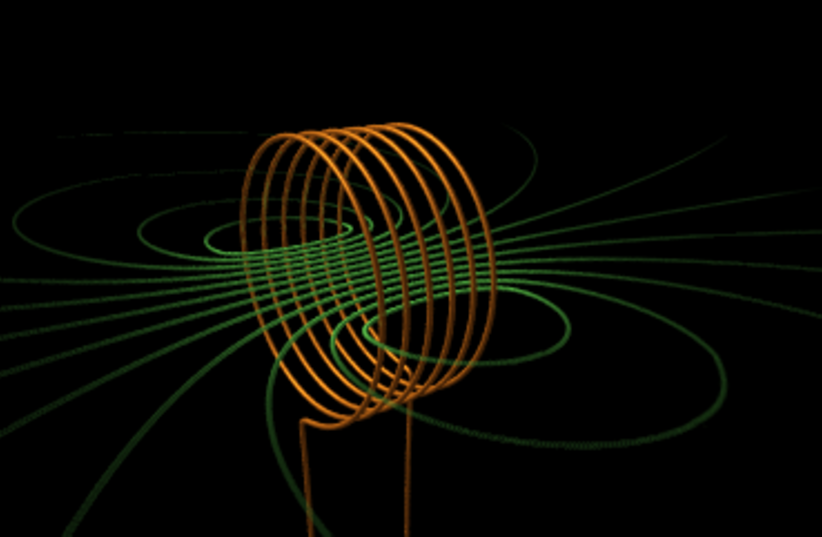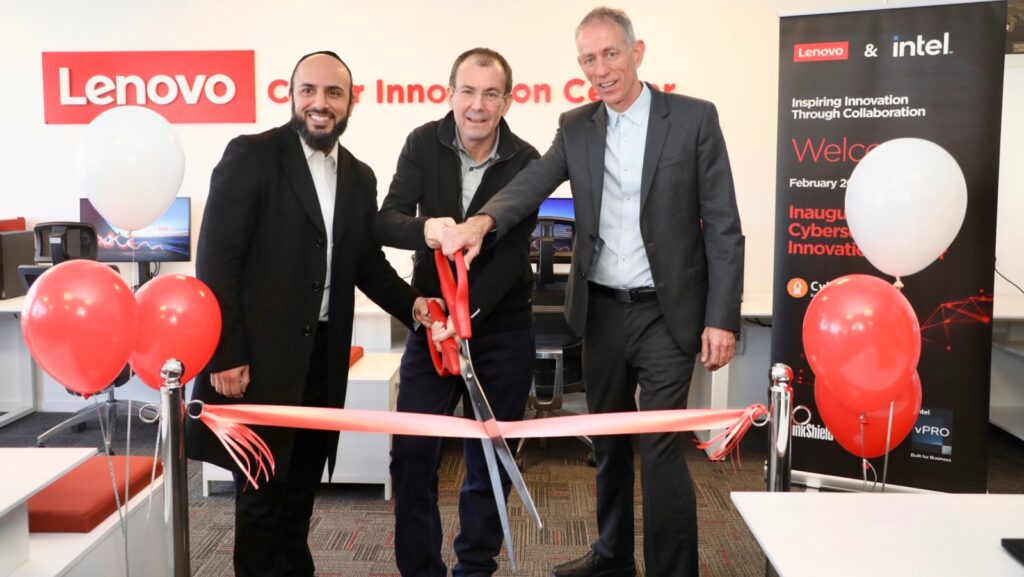
From Israel’s Negev Desert: Cool Tech for Cars
From Israel’s Negev Desert: Cool Tech for Cars
March 19, 2018
This is an excerpt from Jim Motavalli’s blog on his visit to Ben-Gurion University as part of Americans for Ben-Gurion University’s 2018 Murray Fromson Journalism Fellowship.
Car Talk – “Our original idea was a car that could be folded into something the size of a suitcase,” says Dr. Asaf Formoza, CEO of City Transformer and BGU alumnus. “Instead, we settled for a car that could be folded into the profile of a motorcycle.”
Dr. Formoza points out that 30 percent of travel time is wasted looking for a parking space. The company’s car, which folds on the run, can fit between parking spaces. It’s electric, lightweight, set up for autonomous driving, and aimed at a $13,000 price point.
The range of the little two-seater is 80 miles (with the air conditioning on). The intended use, aside from urban runabout, is pizza delivery, taxi, and park maintenance.
Dr. Formoza started the company in 2013 with partners Dr. Gideon Goldwine, a fellow BGU mechanical engineering Ph.D. and cofounder of the student team that built the first Israeli Formula SAE car, and Erez Abramov, a practical engineer and rally sport driver experienced in developing motor sport vehicles.
City Transformer may be dreaming when it talks about a million folding cars soon appearing on the world’s streets, but dreaming is what they do best in the Start-Up Nation that is Israel.
I was in the country to visit Ben-Gurion University’s tech campus in the Negev desert, and many of the young businesses got their start in the college’s labs. Now there’s also Ben-Gurion Advanced Technologies Park—featuring companies like Dell, Lockheed Martin, IBM, and Deutsche Telecomm—that works closely with BGU on issues like cybersecurity and robotics. Two bridges carry pedestrian traffic between the tech center and the university, and a new train station takes travelers to Tel Aviv in an hour.
Prof. Hugo Guterman, director of BGU’s Laboratory for Autonomous Robotics and member of the BGU Homeland Security Institute, seemed delighted to let us see his self-driving golf cart and submarine. The cart will give way to a car in a few months, and the basic idea is a portable self-driving system that folds into a suitcase and can be transferred from vehicle to vehicle. That way, Prof. Guterman says, a few of the billions of cars we already have on the road can be driven autonomously.
The gangly Dr. Eran Ben-Elia, head of BGU’s Game-Based Models Lab and senior lecturer in the Department of Geography and Environmental Development, uses games to predict driver behavior. People lie on surveys, he says—including about whether they’d be willing to give up their privately owned cars for shared autonomous ones—but their real opinions are revealed through gaming. “In games, we see how people actually behave,” says Dr. Ben-Elia. Also, gaming environments are easier to manipulate than the real-world version.
I tried a challenge in which I circled around looking for a parking space—it tested whether I’d be willing to pay extra for a space close to my destination. Evidently, I’m not. Journalists are cheap. Another game looked at how we handle GPS directions—sticking to one route often makes sense, despite what the GPS offers.
Another lab has an old Cadillac that has never turned a wheel on the road. Instead, it’s the basis for the most realistic driving simulator I’ve ever used. The rear-view mirrors are screens, and the view ahead is a very lifelike, but virtual, city. The “car” made me motion sick going around curves and braking, just as real cars do. The feeling of motion was absolute.
We visited Dr. David Zarrouk, director of BGU’s Bio-Inspired and Medical Robotics Lab and a lecturer in the Department of Mechanical Engineering, and saw robot vehicles with flexible chassis (inspired by cockroaches and the tails of lizards) that could flip over and climb through rubble.
“Soon we may be seeing medical robots—useful for precise drug delivery, tumor treatment and endoscopy—that can crawl swiftly through our intestines and blood vessels,” says Dr. Zarrouk.
Prof. Gabby Sarusi in the BGU Unit of Electro-Optical Engineering and the Ilse Katz Institute for Nanoscale Science and Technology, has come up with an inexpensive way to attach a nanoscale infra-red sensor (thinner than a stamp) to an existing visible-light sensor in a cellphone or other device, enabling low-cost night-vision goggles or, on an autonomous car, better visibility through fog, smoke and night darkness. Prof. Sarusi says that what is a $300 device now could be sold for $7 or $8 in two years. Hybrid and electric cars may be able to use the technology with photovoltaics to harvest electricity from infra-red light, giving them a boost in the way regenerative braking does now.

